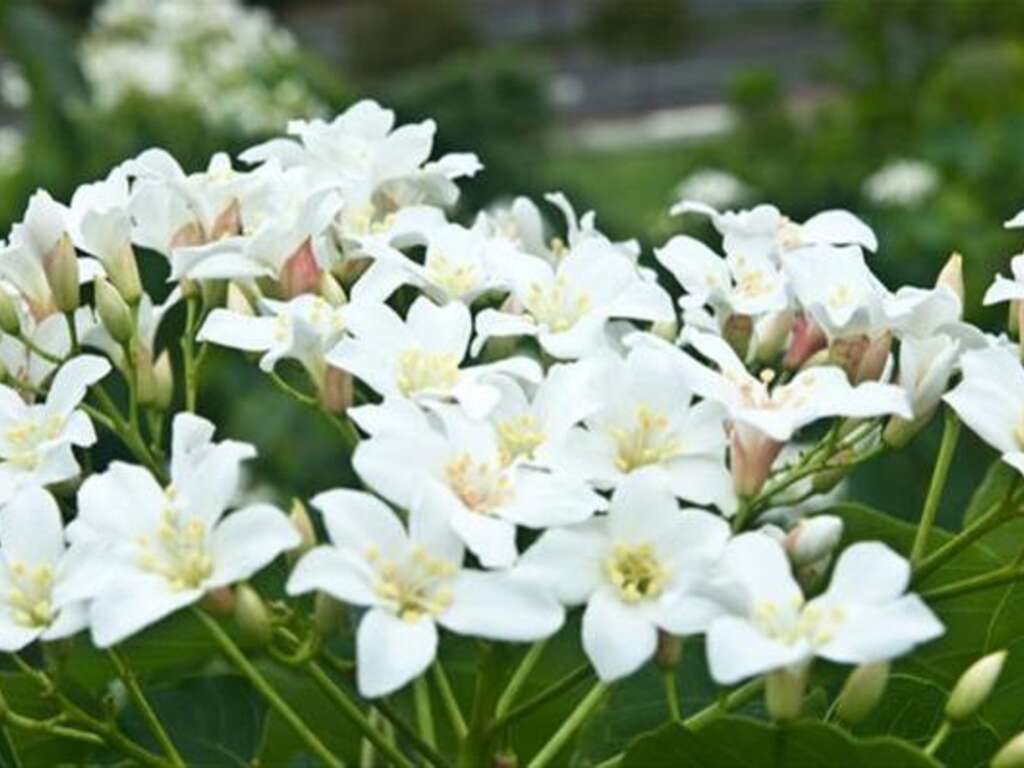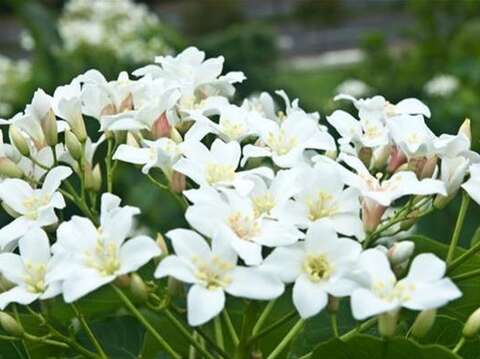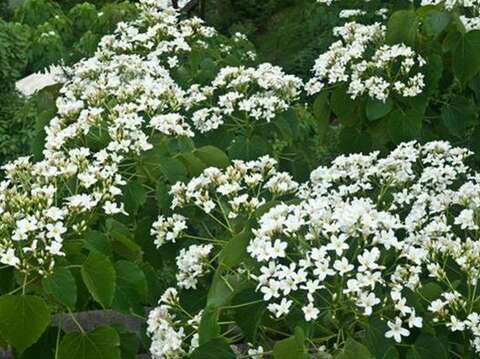Posted Date:2023-09-19
Updated:2023-12-15
Popularity
529Tung Tree
- Photographer: Cob
Tung flowers are a symbolic of Hakka culture in Taiwan. The author loves to watch tung flowers in Lion’s Head Mountain Scenic Area. In the scenic area, you can watch tung flowers at places such as Tengping Trail, Liuliao Historic Trail, Shishan Historic Trail, Shishan Historic Trail, Lion’s Head Mountain Visitor Center, Xiexin Tea House, Funan Tung Blossom Square and Penglai River Fish Protection Trail. The Tung tree is a deciduous species in the spurge family native to China. It has other vernacular names such as tung-oil or tungoil tree, the kalo nut tree, and the China wood-oil tree, but “tung tree” is the most widely-used name. As tung oil can be extracted from the seeds of tung trees, tung trees are highly valuable. The propagation of tung trees depends on the seeds.
Tung trees are not tall and usually grow up to 9 meters (30 feet). The leaves are usually 15-25 cm (6-10 inches) in length and width. Every part of the tung tree is poisonous; the seeds are the most poisonous. Eating one single seed can be fatal to a human.
In the early days, widely planted tung trees used to be the important cash crop for the Hakka people, and brought business opportunities to the local areas. As an important cash crop in Taiwan in the past, tung trees were widely planted in hilly areas near Hakka communities.
Photos


